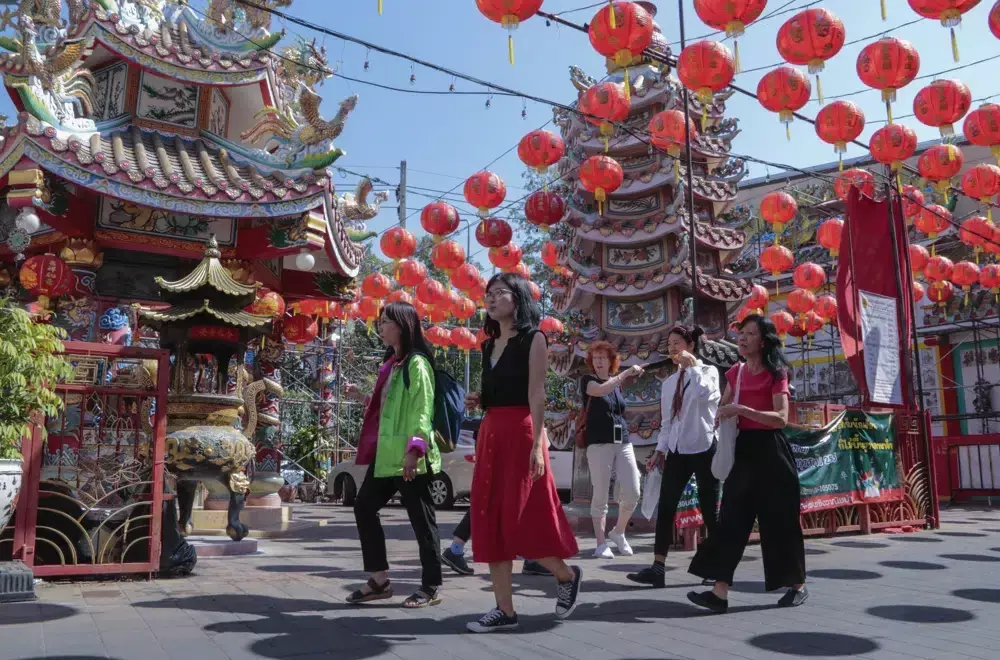
Just a handful of Chinese visitors were posing for photos and basking in the sun this week in the market and plazas near Chiang Mai’s ancient Tha Phae Gate, one of many tourist hotspots still waiting for millions of Chinese travelers to return.
The beaches and temples of destinations like Bali and Chiang Mai are the busiest they have been since the pandemic struck three years ago, but they’re still relatively quiet.
Still, Chanatip Pansomboon, a soft drinks seller in the Chinatown district of Chiang Mai, a scenic riverside city in northern Thailand, was upbeat. He trusts that with the number of flights from China steadily increasing, it’s only a matter of time.
“If a lot of them can return, it will be great as they have buying power,” Chanatip said.
The expected resumption of group tours from China is likely to bring far more visitors. For now, it’s only individual travelers who can afford to pay, with flights costing more than triple what they normally do, who are venturing abroad.
In 2019, 1.2 million Chinese tourists visited Chiang Mai, generating 15 billion baht ($450 million) of tourism-related income, money sorely missed across the region as countries shut their borders to most travel.
Group tours are due to resume from Feb. 6, but the number of tourists who will come will depends on how many flights are operating, said Suladda Sarutilawan, director of the Tourism Authority of Thailand’s Chiang Mai office. She said the hope is for about 500,000-600,000 visitors from China this year.
Far to the south, on the tropical Indonesian resort island of Bali, the shops and restaurants — some decorated with festive red lanterns and red and gold envelopes used for Lunar New Year cash presents, were still relatively empty.
Bali’s first post-pandemic direct flight from China arrived on Sunday, bringing 210 tourists from the southern city of Shenzhen who were greeted with garlands of marigolds and dance performances.
“Before COVID, we worked with travel agents who handled Chinese tourists who brought us guests from China everyday, but since they closed down there are far fewer guests,” said Made Sutarma, a seafood restaurant owner in Bali’s Jimbaran area.
Fewer than 23,000 Chinese tourists visited Bali from January-November of last year and only a quarter of the island’s 80 tour operators who mostly handle Chinese clients are operating, said Putu Winastra, chairman of the Bali Association of Indonesian Tours and Travel Agencies.
“Actually, we’re very concerned about this,” he said.
Indonesia is developing programs to attract more Chinese tourists, including exploring starting direct flights from major cities like Beijing, Shanghai and Guangzhou, he said.
Further afield in Australia, Sydney-based travel agent Eric Wang said the high cost of travel still appears to be keeping Chinese away even as Chinese airlines increase flights.
Chinese accounted for nearly a third of all tourism spending in Australia before the pandemic, with more than 1.4 million visiting in 2019. Australia, like Japan, the U.S. and some other countries, is requiring visitors coming from China to take COVID-19 tests before departure. But Wang, who works for CBT Holidays, a company specializing in travel to and from China, said he didn’t view that as a serious obstacle.
“It’s more about the airlines, because flights are not back to normal frequency yet so air fares are like five times more expensive,” he said.